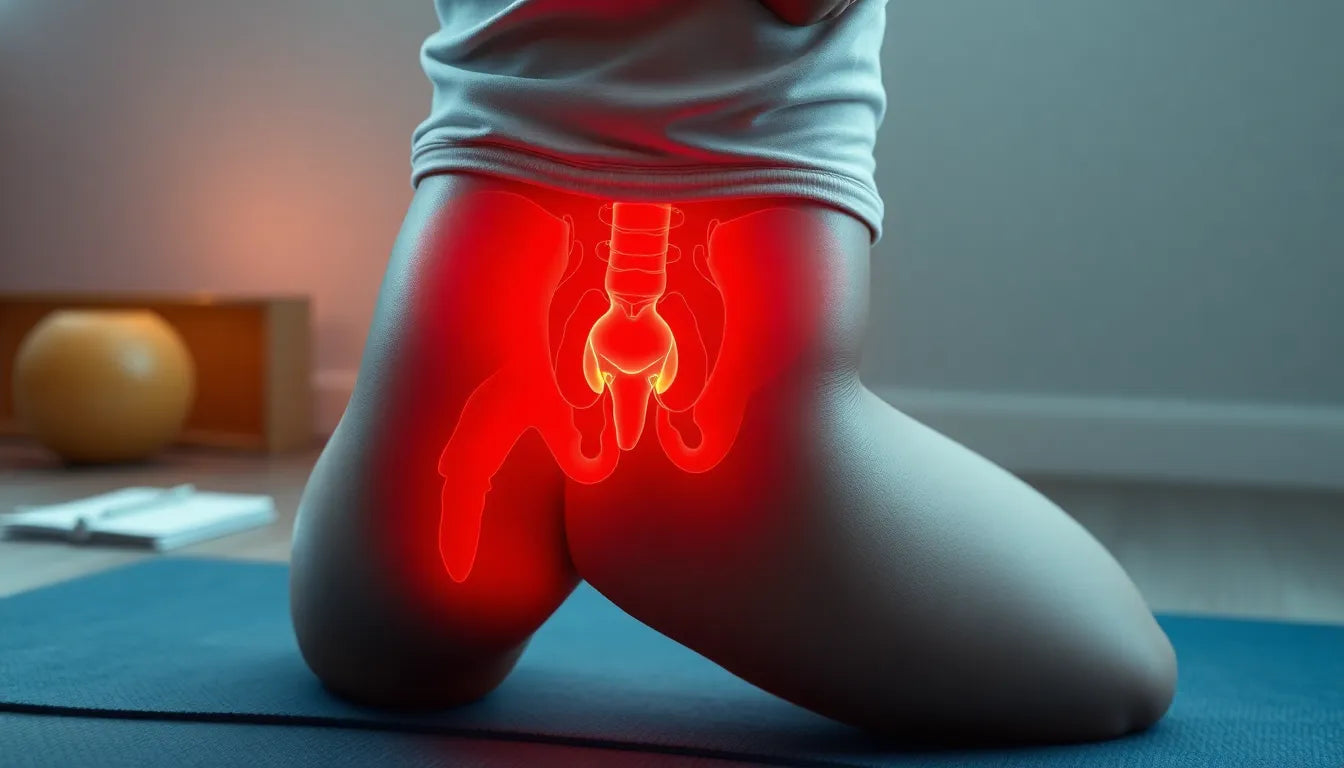Understanding sciatic nerve pain is crucial for anyone experiencing discomfort along the path of the sciatic nerve. This condition, commonly referred to as ischias, manifests as sharp pain, tingling, or numbness that travels from the lower back through the hips and buttocks, extending down each leg. It's a widespread issue that can significantly impact daily activities, making it essential to find effective relief strategies.
The role of stretching exercises in managing sciatic nerve pain cannot be overstated. Targeted stretching exercises are vital in reducing muscle tension and alleviating pressure on the sciatic nerve. These exercises are specifically designed to address the underlying causes of pain, such as tight muscles and restricted movement, thereby promoting overall pain relief. By incorporating these exercises into your routine, you can improve flexibility and mobility, which are critical in managing and reducing sciatic pain.
For those seeking relief, the potential benefits of regular stretching exercises are significant. Engaging in these exercises can lead to substantial improvements in comfort and functionality. The outlined methods offer a practical approach to managing sciatic nerve pain, empowering individuals to take control of their condition. By committing to a regular practice of these exercises, you can experience a noticeable reduction in pain and an enhancement in your quality of life.
As you explore these stretching exercises for the sciatic nerve, it's important to approach them with consistency and mindfulness. Each exercise targets specific muscle groups that, when tight or inflamed, contribute to sciatic nerve irritation. The exercises will help in loosening these muscles, particularly the hamstrings and the piriformis muscle, which are often implicated in sciatic nerve compression. By focusing on these areas, you can effectively decrease nerve pressure and achieve lasting relief.
In conclusion, understanding and addressing sciatic nerve pain through targeted stretching exercises is a powerful strategy for pain management. By incorporating these exercises into your daily routine, you can take proactive steps towards reducing discomfort and improving your overall well-being. Explore the exercises outlined in the following sections to begin your journey towards relief and recovery.
effective stretching exercises for sciatic nerve pain
For those dealing with sciatic nerve pain, incorporating specific stretching exercises into your daily routine can be transformative. These exercises, designed to target the muscles surrounding the sciatic nerve, are not just about temporary relief but aim to address the root causes of pain. In this section, we delve into some of the most effective exercises that can help alleviate discomfort and enhance your mobility.
knæ-til-bryst strækket (knee-to-chest stretch)
The knee-to-chest stretch is a fundamental exercise for relieving tension in the lower back and buttocks, areas that often contribute to sciatic nerve pain. By gently stretching these muscles, you can reduce the pressure on the sciatic nerve, providing much-needed relief.
Instructions:
- Lie flat on your back with your knees bent and feet flat on the floor.
- Slowly bring one knee towards your chest, holding it with both hands.
- Keep the other leg extended on the floor.
- Hold this position for 20-30 seconds, then switch to the other leg.
Frequency: For optimal results, perform 3-5 repetitions on each side. This consistency helps in gradually loosening the muscles and reducing nerve pressure.
piriformis strækket (piriformis stretch)
The piriformis muscle, located deep within the buttock, can sometimes irritate the sciatic nerve, leading to pain. The piriformis stretch specifically targets this muscle, helping to relieve tension and prevent nerve compression.
Instructions – Seated Version:
- Sit on the floor and cross one leg over the other.
- Gently pull the bent knee towards your chest, or twist your torso towards the bent knee for a deeper stretch.
Alternative Method: Consider using a foam roller under the buttock to massage the muscle, enhancing the stretch's effectiveness and providing additional relief.
Hold Time: Maintain the stretch for 20-30 seconds per side to allow the muscle to relax fully.
kobra-stræk (cobra stretch)
The cobra stretch is excellent for improving spinal flexibility and mobility, which are crucial in managing sciatic pain. This exercise helps in elongating the spine and reducing tension in the lower back.
Instructions:
- Lie face down with your hands positioned under your shoulders.
- Gently push your upper body off the ground, keeping your hips on the floor.
- Hold the position for 15-30 seconds, focusing on a smooth, controlled motion.
hoftedrejning (hip rotation)
Hip rotation exercises are vital for increasing blood circulation and alleviating stiffness in the hips, which can indirectly affect the sciatic nerve.
Instructions:
- Lie on your back with knees bent.
- Slowly drop both knees to one side while keeping your shoulders flat on the floor.
- Hold this position for 15-30 seconds before switching to the other side.
Incorporating these exercises into your routine can significantly impact your comfort and mobility. However, it's crucial to perform them slowly and with control to prevent any further irritation of the nerve. If you experience severe or persistent pain, consulting a healthcare professional for personalized guidance is advisable. By combining these stretches with other supportive measures, such as using a stabilizing lumbar belt or engaging in strength training, you can enhance your pain relief strategy and improve your overall quality of life.

Lumbar support belt
Supports and stabilises the lower back—ideal for relief from sciatica, herniated discs, and tension.

Men's Posture Shirt™ - Black
Patented shirt that activates muscles and may relieve pain and tension in back and shoulders.
importance of proper execution and additional measures
When performing stretching exercises for the sciatic nerve, it's crucial to focus on proper execution to avoid exacerbating pain or causing further nerve damage. Each movement should be slow and controlled, allowing the muscles to stretch gradually without sudden jerks that might strain the area. Consistency in practice is key, but so is mindfulness in execution.
In addition to stretching, combining these exercises with other supportive measures can significantly enhance pain relief. For instance, using a stabilizing lumbar belt can provide additional support to the lower back, reducing strain during daily activities. Engaging in strength training exercises can also be beneficial, as strengthening the core and lower back muscles can provide better support for the spine and alleviate pressure on the sciatic nerve.
It's important to remember that while these exercises are beneficial, they should not replace professional medical advice. If you experience severe or persistent pain, consulting a physiotherapist or healthcare professional is advisable. They can provide personalized guidance, ensuring that you perform the exercises correctly and safely, and may recommend additional treatments or modifications tailored to your specific needs.
frequently asked questions
what are the benefits of stretching for sciatic nerve pain?
Stretching helps to relieve muscle tension, reduce nerve pressure, and improve flexibility, which collectively contribute to alleviating sciatic nerve pain.
how often should I perform these exercises?
It is recommended to perform these exercises daily or as advised by a healthcare professional to maintain flexibility and relieve tension effectively.
can I use other aids, like foam rollers, with these exercises?
Yes, foam rollers can be used to enhance the effectiveness of certain stretches, such as the piriformis stretch, by providing additional muscle relief and improving the stretch.
when should I seek professional help?
If you experience severe, persistent, or worsening pain, it is crucial to seek professional medical advice to ensure proper diagnosis and treatment.
are there any precautions I should take while doing these exercises?
Always perform exercises slowly and with control. Stop immediately if you experience any sharp pain, and consult a healthcare professional if needed.
Kilder
- Min Osteopat. ”Iskiasnerve i klemme.”
- God Krop. ”Iskiassmerter.”
- Din Flexible Sundhed. ”Øvelser mod iskiassmerter.”
- Smertefri Bevægelse. ”Iskias.”
- Zency. ”Øvelser for iskiassmerter.”
- Aalborg Rygklinik. ”Øvelser til iskias.”
- CPH Osteopati. ”Behandling af iskiassmerter.”
- YouTube. ”Sciatic Pain Relief Exercises.”
- YouTube. ”Exercises for Sciatica Relief.”


















